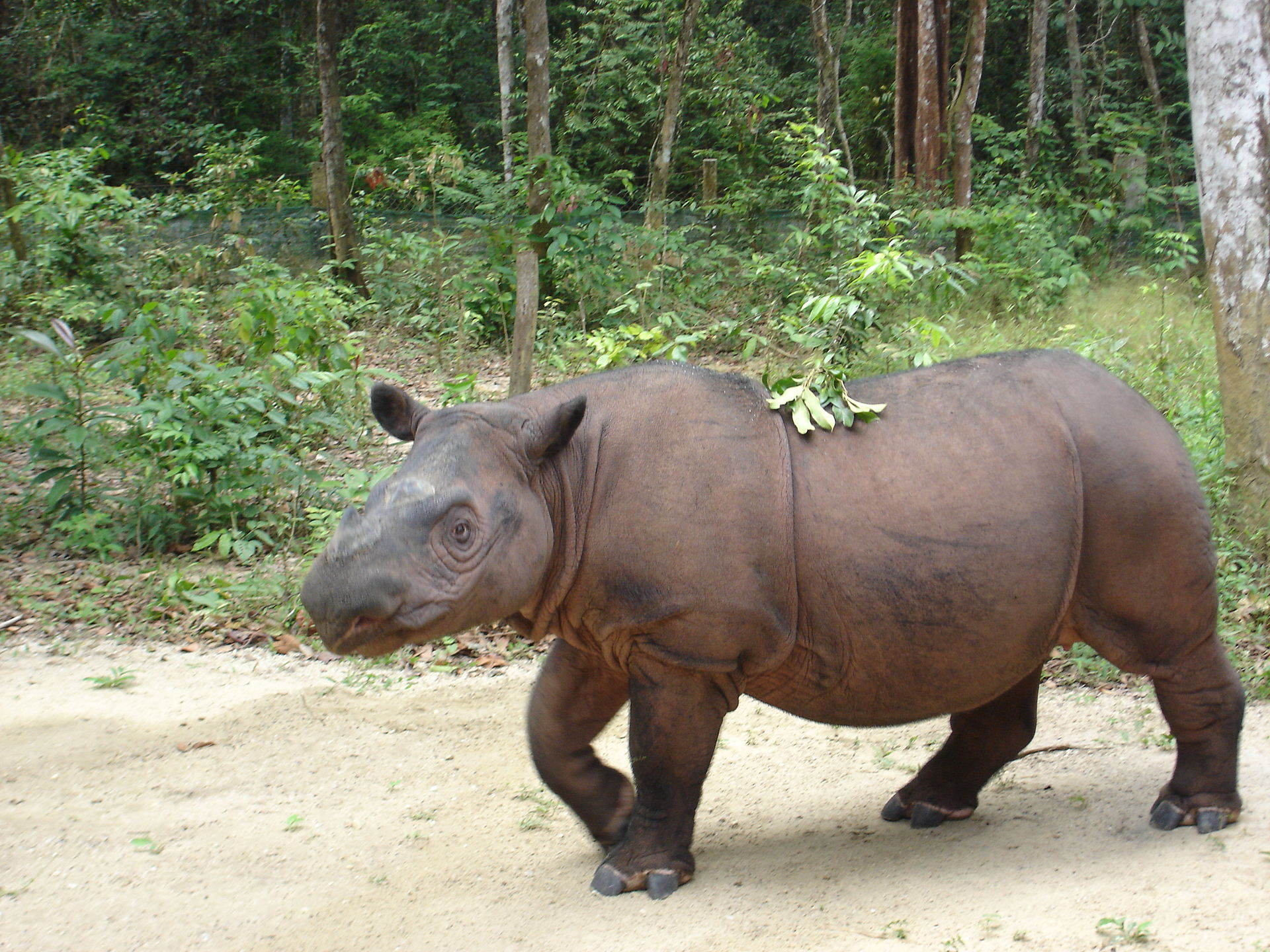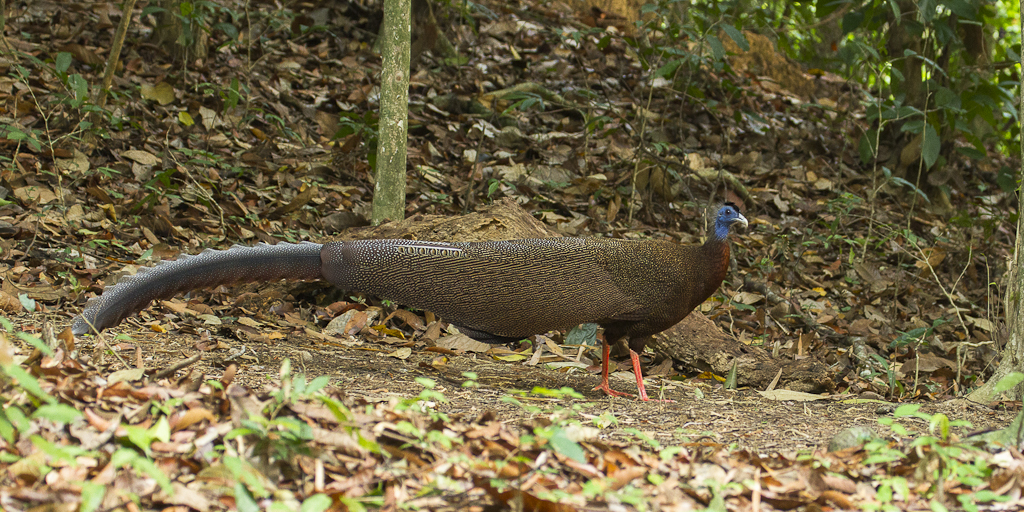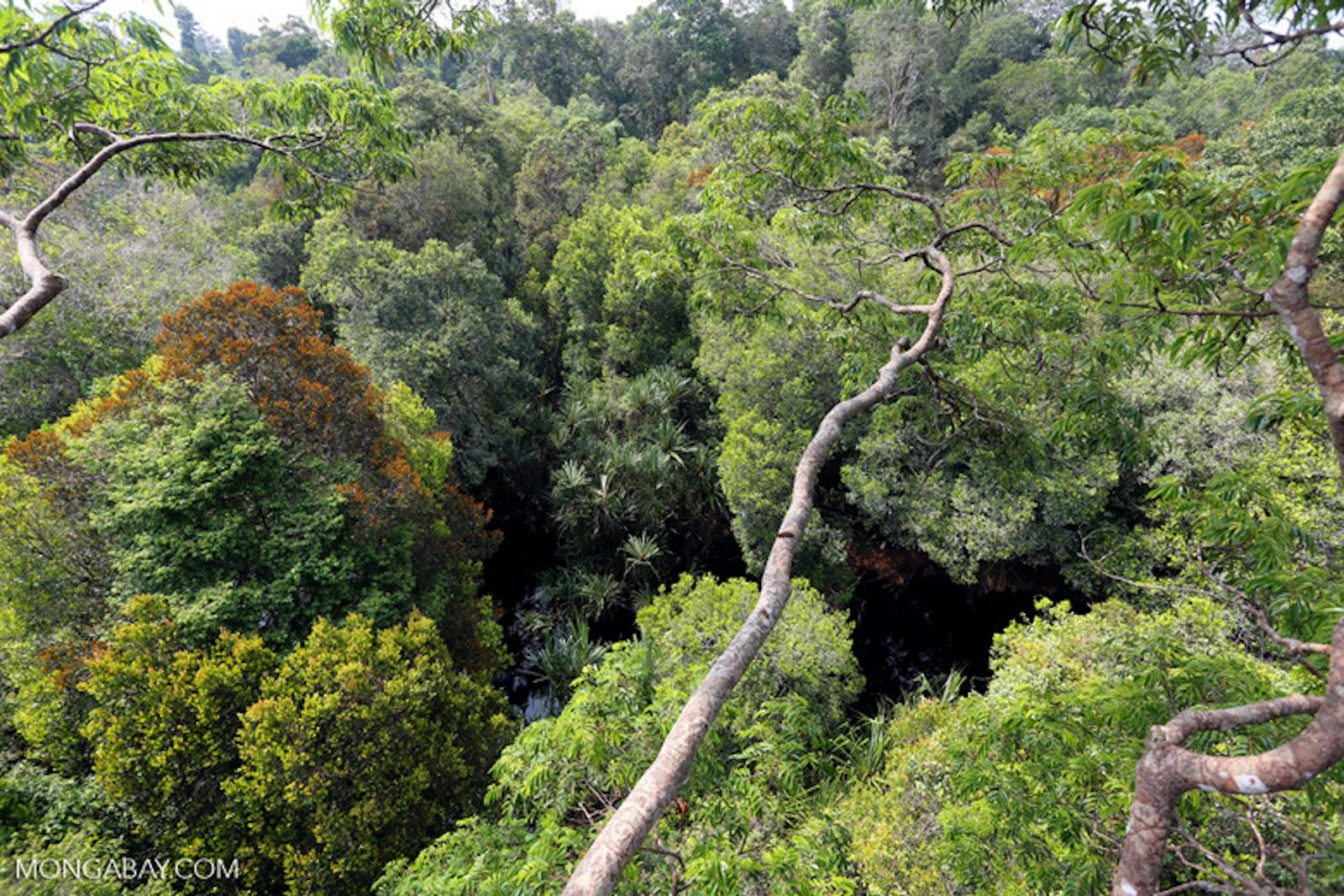Sumatran Lowland Rainforests
The ecoregion’s land area is provided in units of 1,000 hectares. The conservation target is the Global Safety Net (GSN1) area for the given ecoregion. The protection level indicates the percentage of the GSN goal that is currently protected on a scale of 0-10. N/A means data is not available at this time.
Bioregion: Peninsular Malaysian & Sumatran Tropical Rainforests (IM18)
Realm: Indomalaya
Ecoregion Size (1000 ha):
26,002
Ecoregion ID:
278
Conservation Target:
49%
Protection Level:
1
States: Indonesia
The lowland rainforests of Sumatra have a new orange denizen. Unlike the more famous orangutan that lives in the forest canopy, this bright orange-furred animal scurries along the forest floor and has been tentatively identified as an orange-colored version of the collared mongoose. The animal was first photographed in 2012 by camera traps set in in northern Sumatra’s Aceh province. This was the first positive detection of this species since it was described in 1917.

The flagship species of the Sumatran Lowland Rainforests ecoregion is the Sumatran rhinoceros. Image credit: Creative Commons
The Sumatran Lowland Rain Forests ecoregion covers the lowland rainforests of Sumatra. The geologic history of Sumatra is complex, but provides insights into the origins of Sumatra’s biodiversity. Simply put, about 150 million years ago Borneo and Sumatra broke off from the Gondwanaland supercontinent and drifted north. Later, when the collision between the drifting Indian and northern Eurasian continental created the Himalayas, the powerful thrust forces also formed the volcanic arc in western Indonesia, including the Barisan Mountains that run the length of Sumatra. At various times during this process, Sumatra was connected with Borneo and the mainland.
The lowland rain forests west of the Barisan Mountains receive over 4,700 mm of rainfall annually, while the eastern side sits in the rainshadow and receives only 2,500 mm a year. Because of this complex rainfall pattern and terrain, Sumatra’s lowland forests are diverse. Like the forest of Borneo and mainland Asia, Sumatra’s rainforests are also dominated by Dipterocarpaceae, with over 100 species including 6 endemic species.

Agile gibbon. Image credit: Julie Langford, Creative Commons
Several species of Dipterocarpus, Parashorea, Shorea, and Dryobalanops emerge above the canopy, reaching over 70 m in height. Other canopy trees include species of Ficus, Koompasia, Sindora, and Dialium. Ground vegetation is sparse because sunlight does not penetrate to the forest floor. But the Ficus trees sometimes produced and drops huge numbers of fruit to the ground during a natural phenomenon described as ‘masting’. It is believed to be a strategy where synchronized production of large numbers of fruit, between years of smaller crops, satiate the fruit-eating animals so that enough seeds will survive from predation and germinate.
The fauna of Sumatra is rich, and some species have restricted distributions. Two famous denizens of Sumatran forests are the Sumatran orangutan in the northern part of Sumatra, and the Tapanuli orangutan, now considered a separate species that lives further south, on the western side of the mountains. Interestingly, the white-handed gibbon occurs only to the north of Lake Toba that sits in the crater of the super volcano, whereas the dark-handed gibbon lives in the south.

Great argus. Image credit: Francesco Veronesi, Creative Commons
A small refuge population of Sumatran rhinoceros survives in Way Kambas National Park, in the extreme south of Sumatra, while scattered Asian elephant populations occur throughout Sumatra’s lowland forests, especially on the northern side of the Barisan Mountains. The rare Sumatran tiger populations are also scattered, and are better represented in the montane forests. Over 450 birds have been recorded from the ecoregion, including a remarkable assemblage of ten hornbill species.
Sumatra’s forests are under siege from logging and vast paper pulp and palm oil plantations. An expanding human population and demand for land for industries are converting the highly biodiverse forests. Only 7% of the ecoregion is within protected areas, not enough to represent the species-rich forests with high levels of species turnover from north to south. Although land cover assessments suggest that over 60% of the ecoregion’s forests remain, a lot is plantation and not natural forests.
-CC-Luke%20Mackin-2012.jpg)
Yellow-handed mitered mangur. Image credit: Luke Mackin, Creative Commons
Thus, the recommended priority conservation actions are to: 1) bring more natural forests into a protected areas network, identified through an assessment of conservation priorities; 2) place a moratorium on natural forest clearing until the assessment is completed; and 3) leverage international carbon and green finances to engage the central and provincial governments with opportunities in green economic development.
Citations
1. Whitten, T. and Damanik, S.J., 2012. Ecology of Sumatra. Tuttle Publishing.
2. Laumonier, Y., 2012. The vegetation and physiography of Sumatra (Vol. 22). Springer Science & Business Media.
3. Wikramanayake, E, E. Dinerstein, et al. 2002. Terrestrial Ecoregions of the Indo-Pacific: A Conservation Assessment. Island Press.



